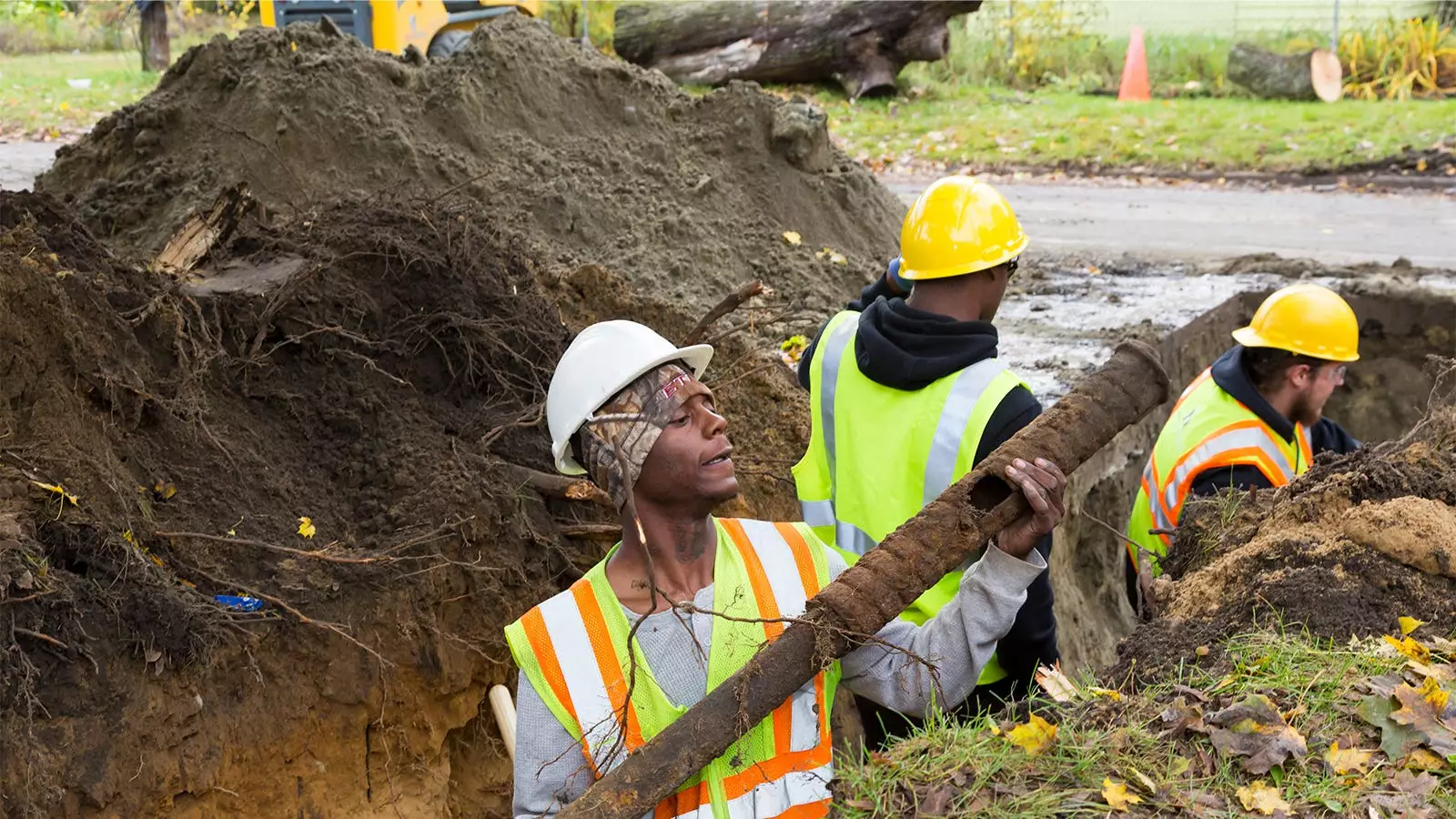In a significant shift towards safeguarding public health, the Biden administration has instituted a groundbreaking mandate requiring the replacement of lead pipes across all water systems nationwide within a decade. Announced recently, this directive emerges as a response to the alarming presence of over 9 million aging lead pipes delivering potentially hazardous water to homes. Environmental Protection Agency (EPA) Administrator Michael Regan articulated a stern message during a press briefing, emphasizing that “there is no safe level of lead in our drinking water.” This bold statement reflects a growing consensus among scientists and public health experts about the dire need to address lead contamination, which has long been dismissed as an old issue rather than a pressing contemporary risk.
The new Lead and Copper Rule Improvements (LCRI) established by the EPA aims to bolster monitoring practices and lower the thresholds at which communities must respond to lead water contamination. This proactive approach will activate further testing protocols, thereby enhancing the likelihood that families will be informed of lead exposure risks and the specific areas where lead pipes are situated. President Biden is slated to showcase this initiative in a visit to Milwaukee, marking a commitment he made in 2021 to eliminate these toxic pipes as part of a larger Lead Pipe and Paint Action Plan.
At the heart of this initiative are critical public health implications. Regan reiterated that exposure to lead poses severe risks, especially for children, whose mental and physical development can suffer irreversible damage. The consequences of lead exposure do not discriminate; they resonate through generations, affecting learning abilities and overall health. In adults, the ramifications include increased blood pressure, heart disease, kidney dysfunction, and even cancer.
The importance of this initiative extends beyond mere regulations; it embodies a pursuit of environmental justice. By fostering an equitable approach to public welfare, the administration aims to mitigate the disproportionate impact of lead poisoning in marginalized communities that historically suffer the most from systemic pollution and contaminated resources.
Substantive change is anticipated from this rule, with EPA estimates suggesting the potential to avert 900,000 low birthweight infants annually and halt 200,000 lost IQ points among children. Furthermore, projections indicate a significant reduction in cases of premature death from heart disease. Such data doesn’t just underline the initiative’s significance; it exemplifies a desperate need for action that resonates on both a public health and moral level.
To underwrite these ambitious strategies, the Biden administration has allocated $2.6 billion towards infrastructure through the Bipartisan Infrastructure Law. The funding is not merely a financial lifeline; it serves as a crucial enabler for local governments embarking on the arduous task of replacing lead pipes. Reports indicate that “hundreds of thousands” have already benefitted from ongoing replacements as cities like Milwaukee, Detroit, Denver, and Erie forge ahead towards the 10-year target.
In a bid to further support vulnerable populations, the Department of Housing and Urban Development (HUD) is investing over $416 million in grants aimed at reducing hazards that jeopardize children’s health. These initiatives extend into addressing lead-based paints, which pose yet another risk to young ones, highlighting a comprehensive strategy to alleviate the ubiquity of lead in residential environments.
However, despite these advancements, skepticism lingers surrounding potential exceptions to the rule. Concerns have surfaced regarding communities being left without timely remediation, losing out on pipe replacements that could stretch for decades. The need for robust oversight and consistent enforcement will be paramount in upholding the integrity of this mandate; otherwise, the promise of clean drinking water may remain an elusive goal for many.
The ramifications of the Biden administration’s new rule reach far beyond the immediate timeline. It parallels a broader cultural shift towards prioritizing public health and environmental sustainability. As communities rally to transform their water systems, the message is clear: America has begun a necessary journey towards a future unmarred by lead contamination. This initiative is not merely about infrastructures but symbolizes the recognition of fundamental human rights—the right to safe and clean drinking water.
In this endeavor, the stakes are high, the commitment undeniable, and the time for action unequivocal. The ambitious plan to replace lead pipes is emblematic of a turning point in America’s battle against environmental injustices and non-negotiable health risks that have long been left unaddressed.


Leave a Reply